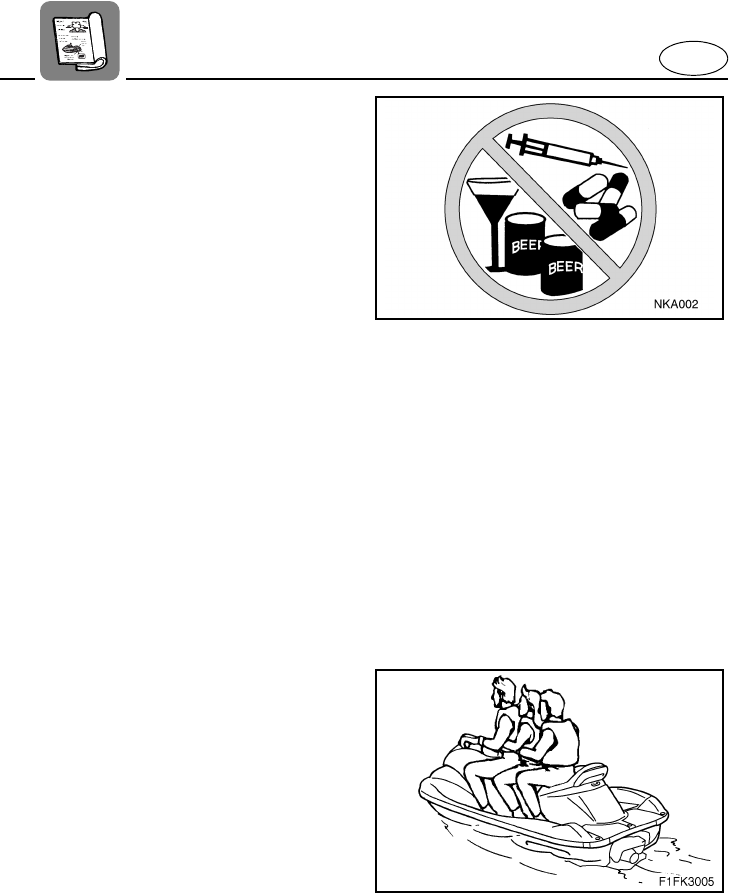
1-13
E
●
Helmets meeting Snell or DOT standards
are required for IJSBA-sanctioned races.
You must decide whether to wear a hel-
met while you ride for recreation. You
should know that a helmet could help pro-
tect you in certain kinds of accidents and
that it could injure you in others.
A helmet is designed to provide some
head protection. Although helmets cannot
protect against all foreseeable impacts, a
helmet might reduce your injuries in a col-
lision with a boat or other obstacle.
A helmet may have potential safety haz-
ards, as well. Falling into the water could
risk the chance of the helmet catching
water, commonly known as “bucketing,”
and the resulting strain on your neck
could cause choking, severe and perma-
nent neck injuries, or death. A helmet
could also increase the risk of an accident
if it reduces your vision or hearing, or if it
distracts you or increases your fatigue.
How should you decide if a helmet’s
potential safety benefits outweigh its
potential risks for you? Consider your par-
ticular riding conditions. Consider factors
such as your riding environment and your
riding style and ability. Also consider the
likelihood of traffic congestion, and the
water surface conditions. If you decide to
wear a helmet based upon your riding cir-
cumstances, choose one carefully. Look
for a helmet designed for personal water-
craft use, if possible. Consider a helmet
meeting Snell or DOT standards. If you
will be engaging in closed-course compe-
tition, follow the helmet requirements of
the sanctioning organization.
●
NEVER operate the watercraft after con-
suming alcohol or taking other drugs.
●
For reasons of safety and proper care of
the watercraft, always perform the pre-
operation checks listed on page 3-4
before operating the watercraft.
●
The operator and passengers should
always keep both feet in the footwell when
the watercraft is in motion. Lifting your
feet increases the chances of losing your
balance, or hitting objects outside the
watercraft with your feet. Do not give a
ride to children if their feet cannot reach
the floor of the footwell.
●
The passengers should hold on firmly,
either to the person in front of them or to
the handgrip provided.
●
Never allow a passenger to ride in front of
the operator.
●
Always consult your doctor on whether it
is safe for you to ride this watercraft if you
are pregnant or in poor health.
UF1K11.book Page 13 Thursday, June 2, 2005 8:45 AM


















